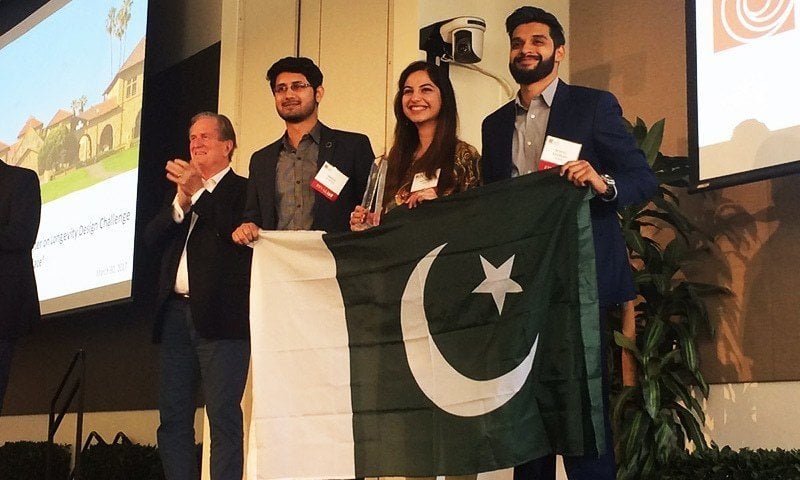 AT THE STANFORD LONGEVITY DESIGN CHALLENGE HELD IN CALIFORNIA
AT THE STANFORD LONGEVITY DESIGN CHALLENGE HELD IN CALIFORNIA
The Team of NUST-SEECS graduates, comprising Engr Awais Shafique, Engr Hooria Anam and Engr Arsalan Javed developed a tremor acquisition and minimization system as their FYP Titled “TAME”. Their project was selected in the final round in Stanford Longevity design challenge held in California, amongst the top 9 teams from around the world including MIT, Stanford, UC Berkeley, Cornell, Virginia Tech, and University of Waterloo.
After defeating teams from all over the world, TAME, a smart wearable for tremor acquisition and minimization, has brought accolades to Pakistan by winning the Stanford Center on Longevity Design Challenge 2017, held in California US.
The Stanford Center on Longevity Design Challenge is a worldwide competition that offers cash prizes and free entrepreneurial-related guidance to the winners. The students from universities all around the world participate in the competition to earn these worthy rewards.
This year the competition was focused on such design projects and products which are modeled to optimize life of human beings. The team TAME was able to get into the finals of this year’s Longevity challenge and consequently bagged the first position at the final which was held in California USA.
Tame (Tremor Acquisition and minimization) is a wearable device for real-time pathological wrist tremor suppression that gives back control to tremor patients for doing daily tasks. The device has a sensor near the wrist which tracks the wearer’s tremor profile and electrodes that stimulate the muscles to counteract the tremor and suppress it. Instead of a conventional glove, TAME is a wearable device, small and light weight enough to be discreetly worn under a shirt. The device’s sensors and electrodes correspond to positions recommended by neurologists and physiotherapists. TAME has 2 variants; a sleeve, and a wearable with retractable wires.